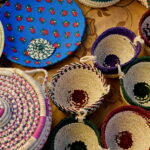Comprehending Optical Fiber Secondary Coating Systems
Did you know that exceeding 90% of global online data flow depends on fiber optic technology? This information underscores the importance of each element in optical fiber cable production, notably the fiber auxiliary coating line. These setups are crucial for ensuring the cables’ resilience and effectiveness.
This piece will delve into the details of optical fiber secondary coating processes. We will analyze their vital function in shielding fiber optics. Additionally, we will consider how these processes boost fiber strength and effectiveness. This information is vital for those working in Fiber coloring machine industry and manufacturing.
Overview of Optical Fiber Technology
Fiber optic technology has transformed information transfer, utilizing light waves over electronic signals. This approach guarantees rapid connections with negligible data degradation. At the heart of this technique are the foundations of fiber optic communications. These foundations are underpinned by a complex structure. It consists of a nucleus, cladding, covering, strengthening fibers, and a protective jacket. Each component is crucial for the technology’s efficiency.
The technology’s adoption into telecommunications has changed our data exchange system. It efficiently manages high data traffic, supporting internet, voice services, and TV channels. As a result, fiber technology not only enhances efficiency but also ensures consistency across the globe.
Exploring Fiber Auxiliary Coating Lines
A optical fiber secondary coating process is a collection of specific tools and procedures. It applies shielding coats to optical fibers after manufacturing. This secondary coating is essential for the fibers’ resilience and functionality. It protects them from external and physical dangers. The importance of coatings in preserving fiber optic strength is clear.
Meaning and Relevance in Fiber Optic Production
The additional covering procedure is essential in optical fiber production. It consists of layering the glass fibers with a polymer layer. This cover protects the optics during installation and operation. It increases the longevity of optics by minimizing wear from bending, scratching, and foreign materials.
Without these coverings, fibers would be susceptible to fracture and performance issues. This procedure is essential for upholding the fibers’ integrity.
The Function of Layers in Safeguarding Fiber Optics
Coverings are key in upholding the light transmission and structural integrity of fiber strands. They act as a shield against mechanical pressure and environmental conditions. The importance of coatings is obvious; they boost the optical fiber strength. This provides easier deployment and a longer lifespan.
This focus on secondary coating is vital for those in fiber optic technology. It’s a detail that significantly impacts the fiber’s effectiveness and longevity.
Components of Optical Fiber Auxiliary Coating Systems
The fiber secondary covering process is a complex system, consisting of multiple critical parts. These elements are vital for producing high-quality outputs. They help us understand how a optical fiber auxiliary system operates and what it demands to operate effectively.
Primary Tools Summary
Essential equipment like optical fiber feeders, gel units, extruders, connection points, and temperature control systems make up the heart of the auxiliary coating system. Each piece of equipment is crucial for the covering procedure. For instance, the coating machine heats the coating material, and the junction unit covers it uniformly around the optic. These components must work together to guarantee uninterrupted operation and product quality.
Materials for Auxiliary Covering
The selection of raw materials for layering is vital for obtaining the intended result. UV-cured acrylate polymers are commonly preferred for their exceptional protective qualities. These substances protect the fiber, boost its durability, and enhance total functionality. The appropriate combination of raw materials guarantees the end output conforms to regulatory benchmarks and user needs.
Understanding the Secondary Coating Process
The additional layering procedure is vital in the fabrication of optical fibers, providing crucial protection to the freshly manufactured optics. This process consists of the addition of shielding substances to boost the fiber strand’s strength and performance. The schedule of this operation is essential; it guarantees perfect bonding, thus minimizing material loss and improving operational effectiveness.
Fabricators use various coating technologies, such as extrusion and gel filling, to customize specific coating properties and depths. Each technique offers unique benefits, ideal for different fiber applications and demands. As the need for superior optical fibers escalates, enhancing the auxiliary covering operation is paramount. It is critical for upholding sector norms and driving layering advancements.
Significance of the Draw Tower in Auxiliary Covering
The fiber strand extraction system is essential in the fabrication of fiber optics. It pulls optics from preforms while adding shielding layers as they solidify. The caliber of the extraction structure is critical, affecting the layering’s success.
Operation of the Extraction Structure
The extraction structure heats the initial shape before extracting the optic at a managed rate. This operation is essential for maintaining the fiber strand’s durability. As the fiber emerges, layers are applied immediately for uniform protection against environmental and mechanical risks. The layout of the drawing setup guarantees ideal covering placement scheduling and bonding.
Link Between Drawing System and Layering Effectiveness
The extraction structure’s standard has a direct effect on the layering’s end quality. Inconsistencies in the drawing process can result in irregular layering dimensions, influencing the fiber’s performance. Superior drawing systems remove these issues. A even layering setup improves fiber durability, making the fiber draw tower more durable and effective in various applications.
Characteristics of High-Quality Secondary Coatings
Top-tier coverings are crucial for the effectiveness and consistency of fiber optic arrangements. They must adhere to strict mechanical and optical standards to ensure data transmission efficiency. This knowledge aids fabricators in creating more reliable outputs.
Mechanical and Optical Performance Standards
Auxiliary coverings need to display superior physical traits. They must endure mechanical pressure and uphold performance across different external factors. This includes adhering well to the glass core and preventing contraction or stretching. Moreover, they should enhance light transmission, ensuring rapid communication with reduced data degradation.
Relevance of Attachment and Prevention of Coating Detachment
Adhesion of the coating to the optic’s nucleus is vital for the network’s durability. Without firm bonding, the risk of layer separation increases, likely resulting in failures. Superior layers are crafted to prevent layer separation, ensuring longevity and reliability across different applications. This resilience not only extends the fiber optics’ lifespan but also enhances effectiveness, highlighting the importance of picking high-quality layering compounds.
Technology Behind Secondary Coating Lines
The advancement of auxiliary covering systems is driven by the pursuit of efficiency and superior product quality. In the optical fiber sector, the embracing of innovative coating equipment is growing. These advancements feature real-time monitoring systems and better polymer applicators. Such systems facilitate fabricators to sustain top-tier benchmarks while optimizing fabrication procedures.
Advances in Auxiliary Covering Tools
Recent advancements in auxiliary covering systems have transformed manufacturing capabilities. New polymer applicators now deliver exact management over the covering operation. This results in enhanced regularity and effectiveness in the completed item. Robotization and smart technology integration further enable faster production cycles with reduced human intervention. This not only cuts down on faults but also improves general production.
Juxtaposition of Auxiliary Covering Systems
Analyzing multiple secondary layering methods is crucial. Modular systems excel for their versatility and expandability. They enable producers to adapt to fluctuating production demands without significant infrastructure changes. In comparison, standard methods are renowned for their reliability and proven effectiveness. The decision on method is based on a firm’s particular requirements, cost considerations, and manufacturing objectives.
Advantages of Using Secondary Coating Lines
Auxiliary covering systems offer multiple advantages to producers in the fiber optic industry. They boost the manufacturing operation, leading to improved economic efficiency and higher product standards.
Financial Savings in Fabrication
Secondary layering processes are vital to cutting manufacturing expenses. They reduce excess material and simplify procedures, causing major financial savings. This efficiency increases profit margins, rendering it crucial for companies seeking to remain ahead.
Better Item Strength and Lifespan
Auxiliary covering systems also enhance product quality. The tough coverings applied through these lines improve the output longevity of fiber optic cables. This leads to prolonged operational period and dependability, ensuring better functionality and customer happiness.
Applications of Fiber Secondary Coating Lines
Optical fiber auxiliary covering systems are vital across different sectors, providing the reliability and performance of fiber optics. These fibers are essential in communication networks, building the base for high-speed internet services. They support effective information transfer, connecting clients worldwide.
In the medical field, these strands are vital for surgical instruments and evaluation tools. Their accuracy and durability are vital for medical applications. The uses of optical fiber auxiliary covering also reach into space and defense sectors, where they support data exchange processes and detection systems.
Consumer electronics benefit greatly from the improved strength of these fibers. They support devices that operate under harsh conditions. The versatility of these strands enables innovative solutions, making them vital in today’s modern tech landscape.
Effect of Auxiliary Covering on Optical Fiber Functionality
The auxiliary covering is essential for boosting fiber optic performance, emphasizing tensile strength and microbending effects. A well-designed coating can substantially lower tiny imperfections in optics that might lead to failure under stress.
Influence of Layers on Optic Resilience
The fiber durability of optical fibers is crucial for their dependability across various applications. Secondary coatings offer a protective layer that mitigates pressure, lowering the likelihood of splitting. This shielding coat ensures that optics maintain their physical strength under outside forces, guaranteeing consistent performance over time.
Minor Bending Effects and Their Relevance
Light distortion can affect signal transmission within optical fibers, resulting in communication issues. Efficient auxiliary coverings reduce these bending issues, providing strands retain their optical properties even in challenging settings. By minimizing light distortion, manufacturers can provide fiber optic cables provide top-notch functionality and strength over time.
Market Trends and Innovations in Fiber Secondary Coating
The fiber secondary coating sector is witnessing significant shifts, driven by the demand for enhanced effectiveness and sustainability. This evolution is driven by the fast-paced development of information exchange, heightening focus on the importance of advanced materials and modern layering methods. These shifts emphasize the necessity of adopting high-tech substances and methods in the covering market.
New Developments in Covering Methods
Improvements in covering methods have led to the creation of novel polymer materials. These compounds provide superior mechanical properties and sustainability. Such advancements not only bolster the resilience of optical fibers but also lessen the carbon footprint. Additionally, enhanced manufacturing techniques ensure better exactness in coating, causing uniform output standards.
Future Prospects for Secondary Coating Lines
The outlook for auxiliary covering systems is set to be marked by the adoption of mechanization and advanced systems. These developments are anticipated to simplify manufacturing, thereby lowering expenses and enhancing product quality. As the industry progresses, the emphasis will continue to be research and development. This will drive further innovations aimed at meeting the demands for high-speed data transmission and sustainability.
Challenges Faced in Fiber Optic Coating
The manufacturing of fiber optic coatings experiences various hurdles that impact fabrication effectiveness and output standards. A critical problem is the challenge of ensuring uniform covering depth across multiple fiber models. Such variations can cause covering challenges, influencing the optics’ general functionality and dependability.
Ensuring proper adhesion between the covering and the optic is another critical challenge. Poor adhesion can cause the covering to malfunction quickly, whether in the initial stages or later in use. Furthermore, impurities in the layering operation present major production obstacles. These contaminants can damage the layer’s effectiveness and functionality. Manufacturers must balance adhering to strict environmental regulations with innovations in production to overcome these hurdles.
Resolving these issues is crucial to meet the growing market demands. It sets the stage for enhanced strength and reliability in optical fiber uses.
Recap of Auxiliary Covering Systems
The recap of secondary layering processes highlights their vital function in creating reliable and high-quality optical fiber strands. These systems not only enhance the structural and optical qualities of fiber strands but also shield them from environmental threats. This ensures the fiber strands stay durable over their lifespan.
Developments in processes have taken the benefits of FTTH cable production line to unprecedented levels. They enhance production efficiency, cut down on waste, and cause superior product quality. The innovations facilitate firmer attachment and strength against challenges like coating detachment, which crucially affects performance.
Understanding the importance of fiber secondary coating lines helps those involved in the optical fiber industry make educated decisions. This insight causes enhanced item availability and fabrication effectiveness. Such developments are vital in today’s challenging industry.
FAQ
What does a fiber secondary coating line mean?
A secondary layering process is a arrangement created to add shielding coverings to fiber optics. This procedure happens following fiber pulling, ensuring the fibers’ durability and performance.
Significance of the auxiliary covering operation in optical fiber production?
The secondary layering procedure is crucial. It defends the optics from mechanical and environmental risks. This enhances their longevity and reliability, while upholding their visual characteristics.
Primary parts of a secondary layering process?
Key components comprise fiber pay-offs, gel units, polymer applicators, crossheads, and cooling units. These parts function seamlessly to add shielding coverings to fiber optics.
What materials are typically used in the coating process?
Common materials used include UV-cured acrylate polymers. These provide a protective layer against harm from flexing, scratching, and pollutants.
Role of the extraction structure in auxiliary covering?
The optical fiber drawing structure controls the fibers’ drawing from preforms and coats with protective substances as they harden. This greatly impacts the covering effectiveness.
What mechanical and optical performance standards do secondary coatings need to meet?
Additional layers must bond strongly to the fiber’s core, resist delamination, and endure mechanical pressure. This boosts the optic resilience and visual transparency of the optical fiber strands.
What are some emerging technologies in secondary coating lines?
Innovative techniques consist of advanced extruder systems and immediate oversight for maintaining quality. These developments improve covering effectiveness and manufacturing productivity.
Benefits of auxiliary covering systems for producers?
Secondary layering processes lead to financial savings in fabrication, better output standards, reduced material waste, and greater strength and functionality of fiber optics.
In which industries are fiber secondary coating lines used?
These systems are applied in telecoms, medical, aerospace, and electronic gadgets. They offer resilient strands for rapid web access and data facilities.
How do secondary coatings impact the tensile strength of optical fibers?
Secondary coatings shield small defects and reduce light distortion. This provides the fiber strands preserve their visual properties and operate steadily under various conditions.
Hurdles in secondary layering fabrication?
Producers encounter obstacles like maintaining coating thickness consistency, achieving strong bonding, preventing contaminants, and following green regulations while pursuing innovation.
Future advancements in secondary layering sector?
The industry is anticipated to witness more robotics, intelligent tool adoption, and improvements in synthetic substances. These are likely to improve eco-friendliness and coating effectiveness.



